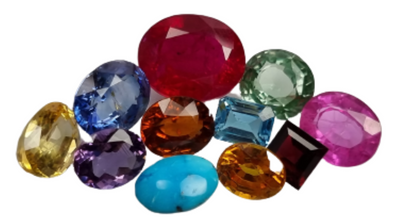Corundum Crystallography
Corundum crystallizes in the trigonal system, but the habit varies with locality and/or color. In many crystals the pinacoid is developed at the expense of the pyramid and rhombohedron; bipyramidal habit is also common. Clues to origin rather than diagnosis may be provided by some corundum crystals.
Combinations of any of these three main habits are also possible. Ruby and sapphire crystals often show different habits. Rubies from Myanmar may occur as hexagonal prisms terminated at both ends by the pinacoid, with rhombohedral faces at alternate corners. The rhombohedral faces may be more or less developed or entirely absent, especially in the large, and usually opaque, crystals from Tanzania and Madagascar.
In many ruby crystals the prisms are flattened and, although they may be of large diameter, are relatively thin. Such crystals often exhibit a stepped or platy appearance, as though the crystal was composed of a number of thin plates. Basal planes of many crystals are traversed in three directions by fine parallel striations, which take the form of hair-like lines crossing at angles of 60/120°, dividing the area into small triangles.
Sapphire (and some ruby) takes the form of a hexagonal bipyramid of twelve triangular faces, six above and six below, meeting at a girdle. This habit may occur in combinations of bipyramids of different inclinations, with the girdle sometimes formed by a narrow hexagonal prism. The ends of many bipyramidal crystals are capped by the flat basal face to give a barrel-shaped habit. The hexagonal bipyramidal habit is common in sapphire crystals from Sri Lanka, and in this form the faces are often deeply striated horizontally, owing to repeated oscillation between different pyramids or between the pyramid and the basal pinacoid.
Sapphires from Yogo Gulch, Montana, as described by Clabaugh in Corundum Deposits of Montana (US Geological Survey Bulletin 983), 1952, showed a number of forms whose true nature was obscured by alteration
of plane surface and original faces by etching. A basal pinacoid and rhombohedron were the two forms identified in a study by Pratt in Corundum and Its Occurrence in the United States (US Geological Survey Bulletin 269), 1906. In general, corundum crystals show predominating pinacoid and pyramid forms; tourmaline might be suspected when a red crystal with predominating prism forms is encountered and red spinel when triangular faces are all that can be seen.




